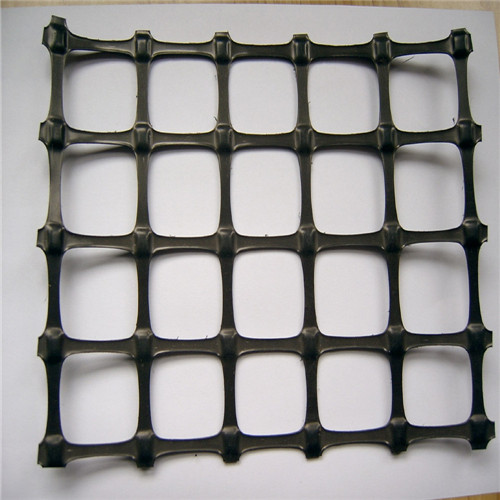- Understanding the Role of Geomembrane Liners in Waste Management
- Innovations in Geomembrane Liners for Water Management
- Geomembrane Liners: A Comprehensive Guide
- The Future of Geomembrane Liners in Civil Engineering
- Geomembrane Liners: Enhancing Landfill Stability
Manager:
WhatsApp:+86 177 0135 2670
Tel:+86 177 0135 2670
Email:marketing@okorder.com
Address:3rd Floor, No.2 Building, No.1 Sanlihe Road
HDPE Geomembranes: A Barrier Against Pond Contamination
Pond contamination is a growing concern for many homeowners, farmers, and environmentalists alike. It poses a threat to the health of aquatic life, the quality of water, and the overall aesthetics of the area. But fear not, for there is a solution that has been proven to be highly effective in combating this issue: hdpe Geomembranes. These versatile materials are designed to act as a barrier, preventing contaminants from seeping into ponds and other water bodies. In this article, we will explore the benefits of using HDPE geomembranes, their applications, and how they can be a game-changer in managing pond contamination.

The Wonders of HDPE Geomembranes
HDPE, or high-density polyethylene, is a type of plastic that is known for its durability, flexibility, and resistance to chemicals, UV radiation, and temperature fluctuations. These properties make it an ideal material for creating geomembranes, which are thin layers used to prevent the movement of fluids and contaminants. HDPE geomembranes are particularly effective in pond containment applications due to their ability to create a seamless barrier that is both strong and impermeable.
How HDPE Geomembranes Work
The primary function of HDPE geomembranes is to act as a barrier between the pond and the surrounding environment. They are designed to prevent the infiltration of contaminants from the soil, air, and other sources into the pond. This is achieved through the following mechanisms:
- Preventing Liquid Seepage: HDPE geomembranes create a waterproof layer that prevents water from seeping through the ground and into the pond.
- Blocking Gaseous Emissions: The geomembranes also block the passage of gases that could potentially contaminate the water.
- Resisting Chemical Reactions: Due to their chemically inert nature, HDPE geomembranes do not react with the substances they come into contact with, ensuring that no harmful byproducts are formed.
Applications of HDPE Geomembranes
HDPE geomembranes are not just limited to pond containment. They have a wide range of applications across various industries, including:
- Waste Management: They are used in landfills to prevent the leakage of hazardous waste into the environment.
- Agriculture: Farmers use them to line irrigation canals and reservoirs, ensuring that water quality is maintained and soil erosion is minimized.
- Construction: In construction projects, HDPE geomembranes are used to prevent water damage and protect the structural integrity of buildings.
- Environmental Protection: They play a crucial role in preserving natural habitats by preventing pollution from industrial activities.
The Emotional Impact of Pond Contamination
Living with a contaminated pond can be disheartening. It affects not only the visual appeal of the area but also the health of the ecosystem. Children and pets may be at risk of exposure to harmful substances, and the once vibrant aquatic life can become a thing of the past. By using HDPE geomembranes, you can take a proactive step in preserving the beauty and health of your pond, ensuring that it remains a sanctuary for all to enjoy.
Personal Stories: Triumphs Over Contamination
There are countless stories of individuals who have successfully battled pond contamination using HDPE geomembranes. One such story is that of a farmer in the Midwest who was struggling with the effects of agricultural runoff on his pond. After installing an HDPE geomembrane, he noticed a significant improvement in water quality and a resurgence of aquatic life. His pond, once a source of concern, is now a thriving ecosystem that he takes pride in.
The Future of Pond Containment
As we move forward, the use of HDPE geomembranes is expected to grow, not only in pond containment but also in various other applications. With advancements in technology and materials, these geomembranes are becoming more efficient, cost-effective, and environmentally friendly. The future looks bright for those seeking to protect their water bodies from contamination.
Conclusion
In conclusion, HDPE geomembranes are a powerful tool in the fight against pond contamination. They offer a durable, flexible, and chemically inert solution that can be tailored to suit a variety of needs. By understanding the benefits and applications of these geomembranes, we can take steps to protect our ponds and preserve the health of our ecosystems. So, the next time you find yourself worrying about pond contamination, remember that there is a reliable solution within reach: HDPE geomembranes.
- Previous:HDPE Geomembranes: The Solution for Ponds in Industrial Applications
- Next:HDPE Geomembranes: The Choice for Large-Scale Pond Lining
-
2024-12-05Geomembrane Liners: A Comprehensive Guide






